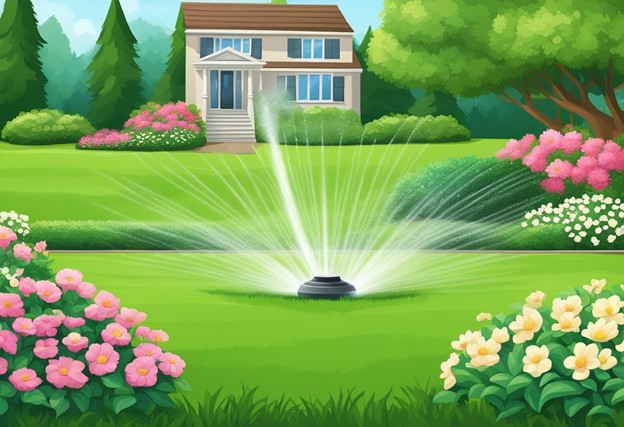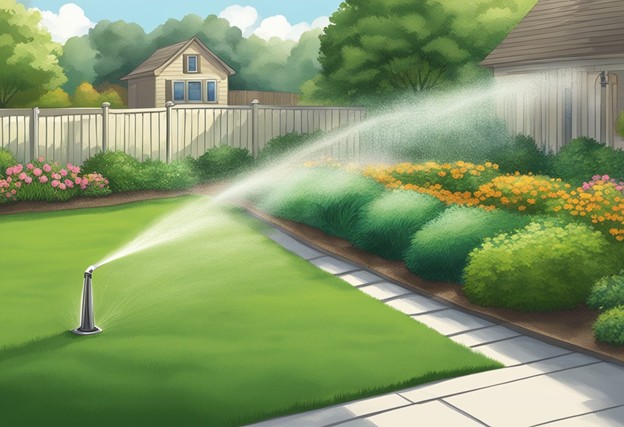A lush, green lawn is the pride of many homeowners, but the approach to watering it can greatly impact its health. Many believe that daily watering is the best way to ensure a thriving yard. In reality, watering your lawn twice a week promotes deeper root growth and conserves resources while still keeping grass healthy. Watering less frequently encourages the grass to develop a strong root system that can better withstand drought conditions and pests. This method allows the soil to dry out between waterings, which reduces the risk of diseases that thrive in overly saturated environments. By adjusting the watering schedule, homeowners can maintain a vibrant lawn while making more sustainable choices. Embracing this twice-weekly watering strategy is not just about aesthetics; it directly contributes to the long-term vitality of the lawn. This approach ultimately fosters a healthier, more resilient yard that can thrive throughout the seasons.
Understanding Your Lawn's Watering Needs

Lawn care requires knowledge of specific factors that influence how much water is necessary. Two key elements are soil type and grass species, both of which impact watering frequency and amount.
Evaluating Soil Type Soil type plays a critical role in determining how often a lawn should be watered. ● Clay Soil: Retains moisture well yet can often become compacted. ○ Watering frequency should be reduced to prevent saturation. ● Sandy Soil: Tends to drain quickly and dries faster. ○ This type requires more frequent watering to maintain moisture.A simple method to test soil drainage is to dig a hole, fill it with water, and observe how quickly it drains. If it drains within an hour, the soil may be sandy. If it remains waterlogged for several hours, clay soil is likely present. Understanding the moisture retention capabilities of the soil enables more effective watering strategies.
Identifying Grass Species
Different grass species have varying water needs, which should align with lawn care practices.
● Cool-Season Grass: Thrives in northern climates and prefers cooler temperatures.
○ This type needs more water during peak growing seasons in spring and fall.
● Warm-Season Grass: Best suited for southern climates, requiring less water during cooler months.
○ It grows more rapidly in summer and can endure drought conditions.
Identifying the dominant grass type in a lawn is essential. Each type will have specific moisture needs. Therefore, recognizing the grass species helps in planning an appropriate watering schedule that promotes a healthy, lush lawn.
Benefits of Less Frequent Watering
Watering the lawn less frequently contributes to healthier grass and reduces the risk of common issues associated with overwatering. This approach enhances root growth and minimizes potential fungal diseases.
Promoting Strong Root Growth
Infrequent watering tends to encourage grass roots to grow much deeper into the soil. A deep root system allows grass to access moisture and nutrients that are further down, improving its resilience during dry spells. When water is applied only twice a week, it forces the roots to reach for moisture, leading to a more robust and drought-tolerant lawn. Strong roots help the grass withstand heat and stress, providing a lush and vibrant appearance throughout the growing season.
Preventing Overwatering Problems
Overwatering can lead to significant issues, like fungal diseases and root rot. Saturated soil deprives grass roots of oxygen, which may result in less vigorous growth and increased susceptibility to diseases. By watering twice a week, the risk of creating a damp environment conducive to fungal growth diminishes. This practice helps maintain healthy grass and improves overall lawn resilience. It is essential to monitor conditions regularly to adapt watering schedules based on rainfall and temperature effectively.
Creating an Efficient Watering Schedule
Establishing an effective watering schedule is crucial for maintaining a healthy lawn. Proper timing and adaptation to local conditions can significantly enhance water efficiency and promote root development.
Determining How Often to Water
To create an appropriate watering schedule, it is essential to assess the lawn’s specific needs. Generally, watering twice a week allows for deep penetration of moisture, encouraging deeper root growth.

Factors to consider include:
● Grass Type: Different grasses have varying water requirements. For instance, cool-season grasses may need more frequent watering in warmer months. ● Soil Type: Sandy soils tend to drain quickly and may require more frequent watering, while on the other hand, clay soils retain moisture longer. The goal is to provide about 1 to 1.5 inches of water per week. This can be measured using a simple rain gauge or container placed in the lawn. Watering during early mornings minimizes evaporation and fungal diseases.
Adapting to Local Weather Patterns
Local weather plays a significant role in determining the watering frequency. For instance, during periods of heavy rainfall, it is wise to reduce watering or skip it altogether. This can be essential for lawns in the Charlotte County areas of Florida!
Understanding local climate conditions helps:
● Adjust Frequency: In hotter, dryer seasons, lawns may require additional watering. Conversely, in cooler months, less frequent watering may suffice. ● Monitor Humidity: High humidity can decrease the need for water due to reduced evaporation rates. Using local weather forecasts and a simple moisture meter can help gauge when the lawn needs water. Adapting the watering schedule according to weather patterns ensures that the lawn receives adequate moisture without waste.
